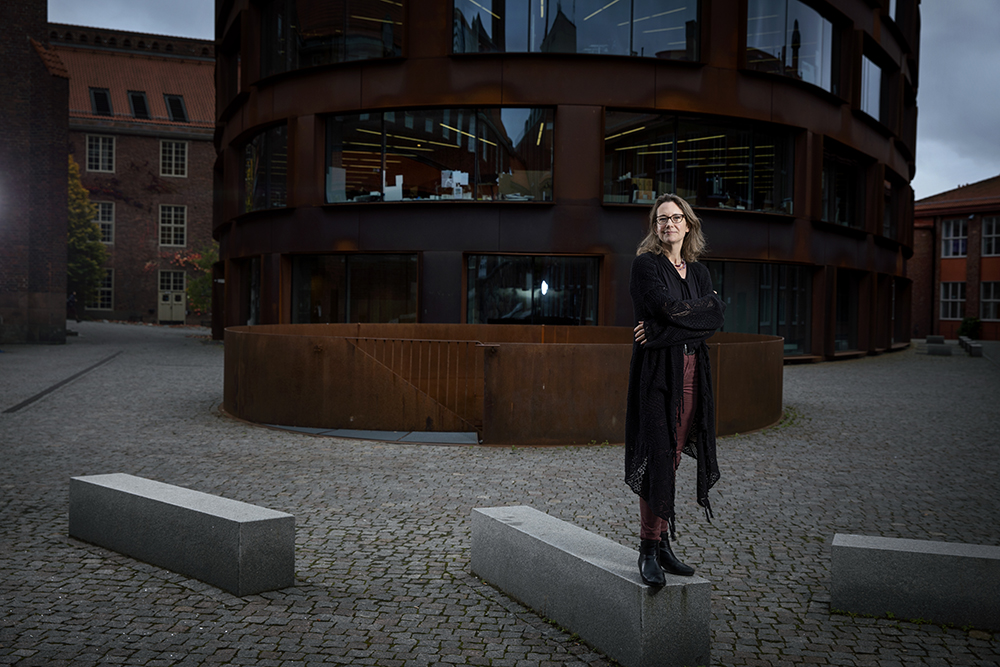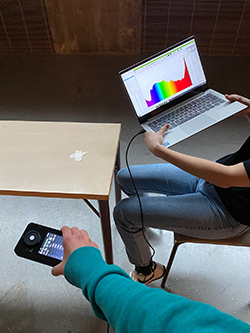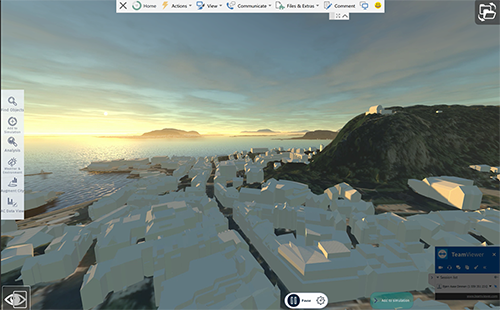Introducing Lighting Design Research in Architecture

The Lighting Design Division of KTH Architecture has a long and rich tradition in lighting design education, and the division's graduates work all around the world. When Associate Professor Ute Besenecker was offered the opportunity to join the division and help expand the focus to lighting design research, she jumped at the chance.
- “With modern technology, we have the option to adjust and tune light in ways we have never in history had access to before. There are many factors at play and now we can control almost all of them, for example, distribution, timing, brightness, and spectrum. What could the effects of this be?”
Ute Besenecker started at KTH in August 2019. In some ways, she says, she still feels very new at KTH, but in other ways she feels as if she has been here “forever”. She came to Stockholm after studying and practicing in Germany, then Italy and the UK, and, in the last 20 years, the USA. She is particularly interested in the challenges that the Nordic darkness provides.
- “Light impacts all of us but in today’s world, we often take it for granted, until there’s a blackout, or the Swedish winter arrives! I am fascinated by how light shapes our experience of architectural space, and how light affects us viscerally. I am also interested in the combination and interaction of electric light and daylight, which makes the Nordic environment the perfect testing ground.”
What are some of the current challenges in architectural lighting design research?

- "With modern lighting technologies that can be easily tuned and integrated into architectural elements, we have enormous new flexibility, which in turn creates new opportunities. And yet, we have not scratched the surface in terms of how to think about what that could mean for architectural or urban design. As a society, we need to learn more about how to use these new technologies."
Policy and standards are often set to give a minimum acceptable level or range of white light qualities based on certain assumptions – but that is where design starts, explains Ute.
- "Much more is possible to shape and support the users’ needs, experience, and behaviour. What do we actually want and need? Going beyond “one-type-fits-all solutions”and “minimum acceptable levels” is necessary both in research and practice. That is where lighting design research plays an important role, it can pave the way for policy, not to hinder, but to enable holistic design solutions and implementations."
Several research grants have already been brought in to investigate related questions. Here are two of them:
Mediating the needs of people and nature in Nordic after-dark environments
This research project focuses on an area particularly relevant in Nordic countries: the use of electric light in after-dark outdoor environments, and the impact it has on flora, fauna, and energy use, as well as human behaviour and wellbeing. The new four-year research project will look at two urban green spaces, one in Ålesund in Norway and one in Uppsala in Sweden, and study lighting from different viewpoints: wildlife and people's. Each site includes existing adjacent urban housing as well as possibilities for further development by the municipality.
- "With today’s technology, we rarely have to adapt our activities to the amount of daylight, even outdoors, but how does that affect the local ecology? Human use of electrical light can disturb wildlife quite severely. We need to find new sustainable ways to implement and develop electrical lighting that provides maximum benefit for humans while minimizing the impact for nature. Our strategy is to bring relevant disciplines together with representatives from design, technology, psychology and ecology. Also, while the design and planning of lighting based on simulators is well established for indoor environments, the use of digital twins for lighting in outdoor urban conditions is still lacking. This will be further developed throughout the project to support researching, designing, and planning 'more-than-human-centric' lighting."
A testbed to evaluate benefits of lighting in learning environments
The second project looks at lighting in educational environments. A school renovation and extension project about three hours north of Stockholm provides the perfect opportunity to create a long-term school lighting testbed. This will provide testing opportunities for architecture-integrated lighting, evaluating its effects upon creativity, wellbeing and performance in a school environment. Lighting is an important factor for regulating the sleep-wake cycle, alertness, and cognitive health.
The lighting design testbed will be able to facilitate research in these areas, while also allowing a focus on energy efficiency and reduced energy usage. Studies will help evaluate the impact of different lighting design solutions on teachers and students. Through a multitude of studies over a number of years, this testbed will be able to inform the development of lighting options to support contemporary methods of teaching and learning for future classroom environments in Sweden and beyond.
What is next for Lighting Design at KTH?

Long-term, the Lighting Design Division aims to build a destination for lighting design research that truly incorporates transdisciplinary research in real world environments. Ute believes this is a real opportunity for KTH.
- "Academic research in light and lighting has mostly been done within engineering, perception, visualization, or material sciences, and also, to a certain extent in the medical sciences. Lighting design research and related practice offers a holistic approach. It is a complex and still new area, and KTH has a real opportunity to be at the forefront, by providing a platform to enable transdisciplinary collaborative research aiming at purposefully designed illumination in the built environment."
Ute and her colleagues are currently working on a strategy and long-term vision for such a research destination in connection with their various projects funded by Bertil & Britt Svenssons stiftelse för belysningsteknik, NordForsk, and the Swedish Energy Agency. The Lighting Design Division is also one of the founding partners in the Light Collaboration Network for Research and Education – an effort currently consisting of four Swedish lighting research institutions, which will grow to include other national and international partners in the future. Ute concludes:
- "But we are also eager to explore how we can create more collaboration within KTH, as we know that there are other departments and research groups at KTH working with light-related topics. We look forward to joining forces for mutual benefits!"
Text: Josefin Backman
This article is the first in the School of Architecture and the Built Environment 's series of articles featuring selected research, education or collaboration from each department.
